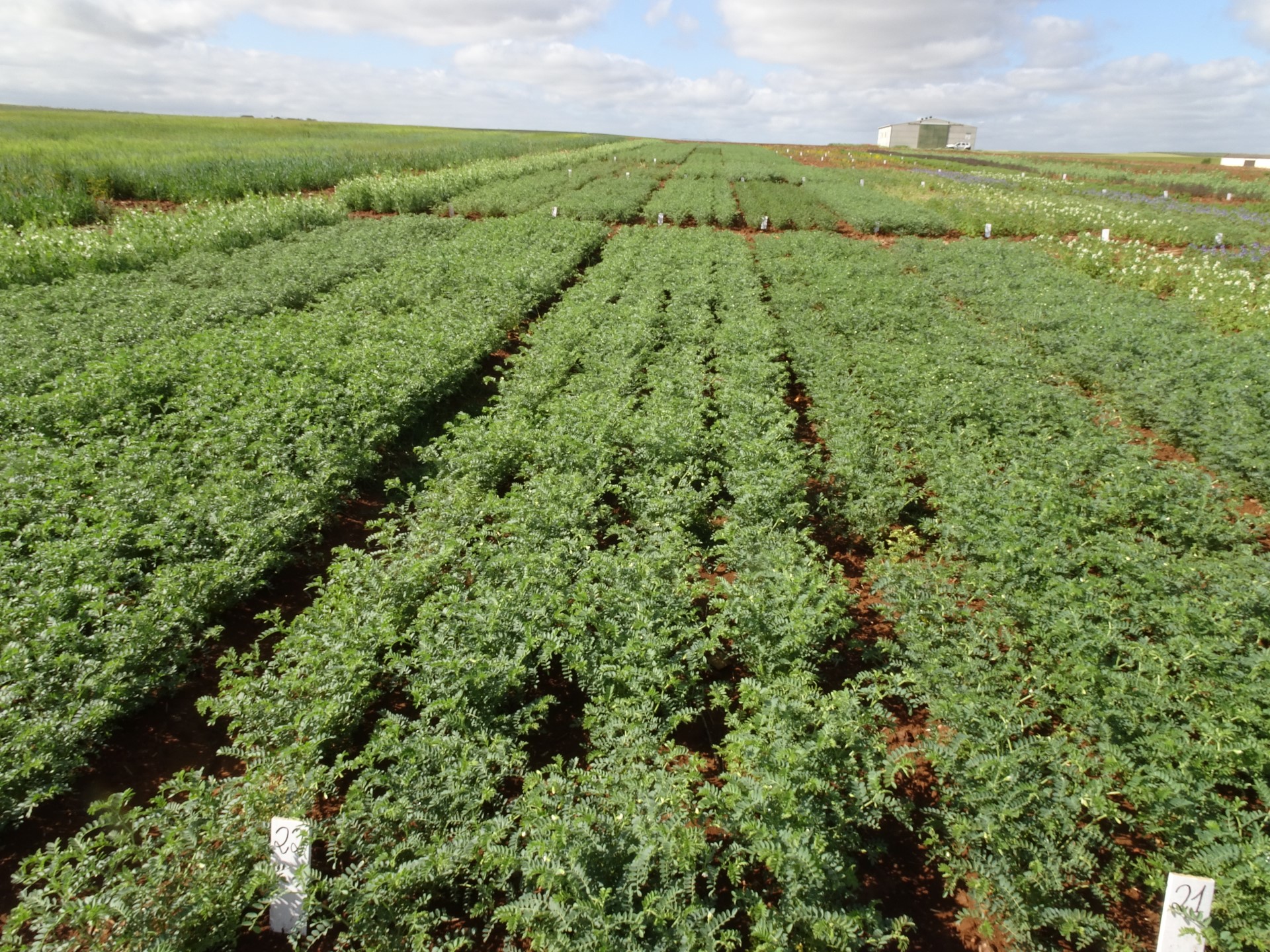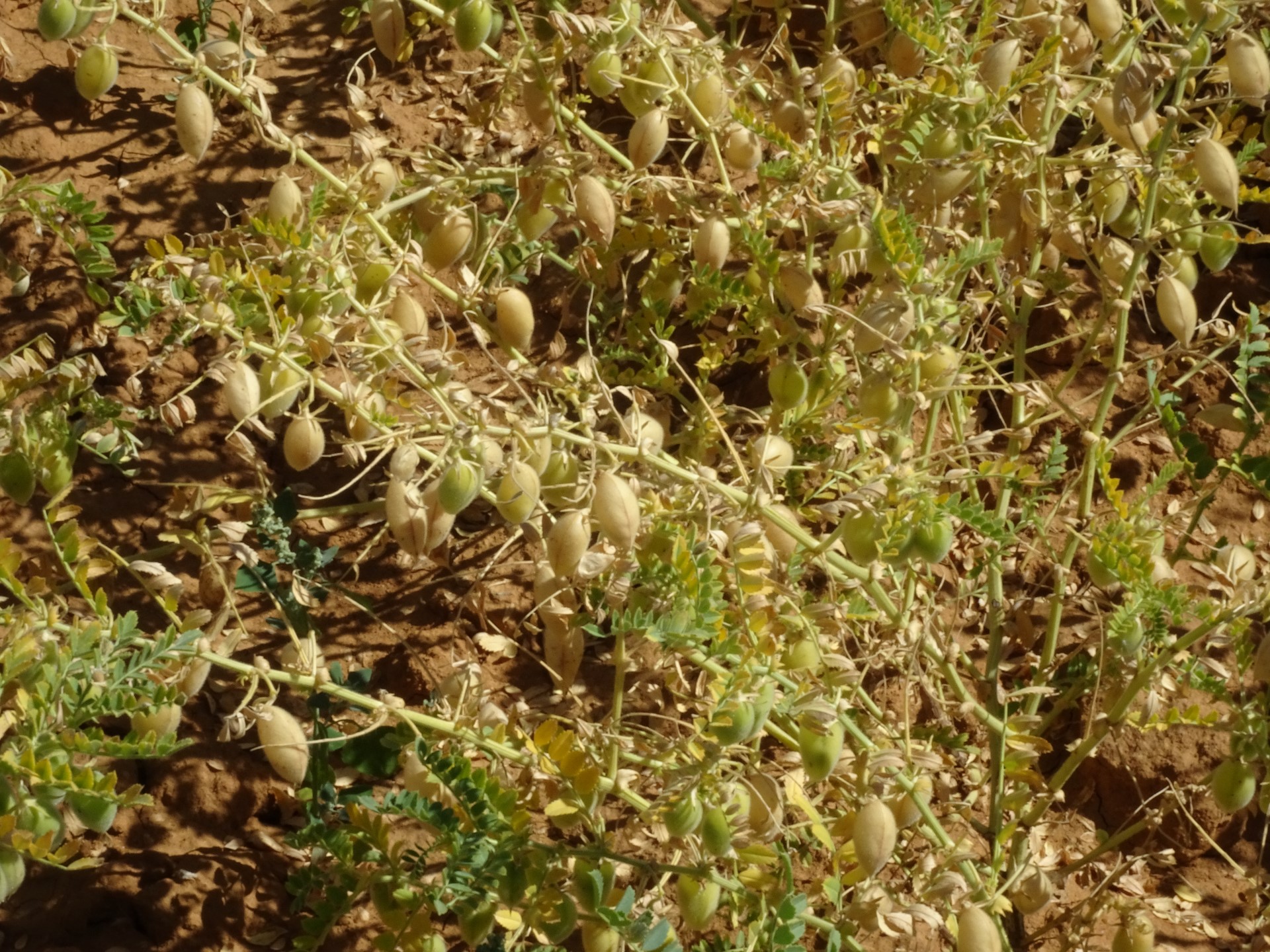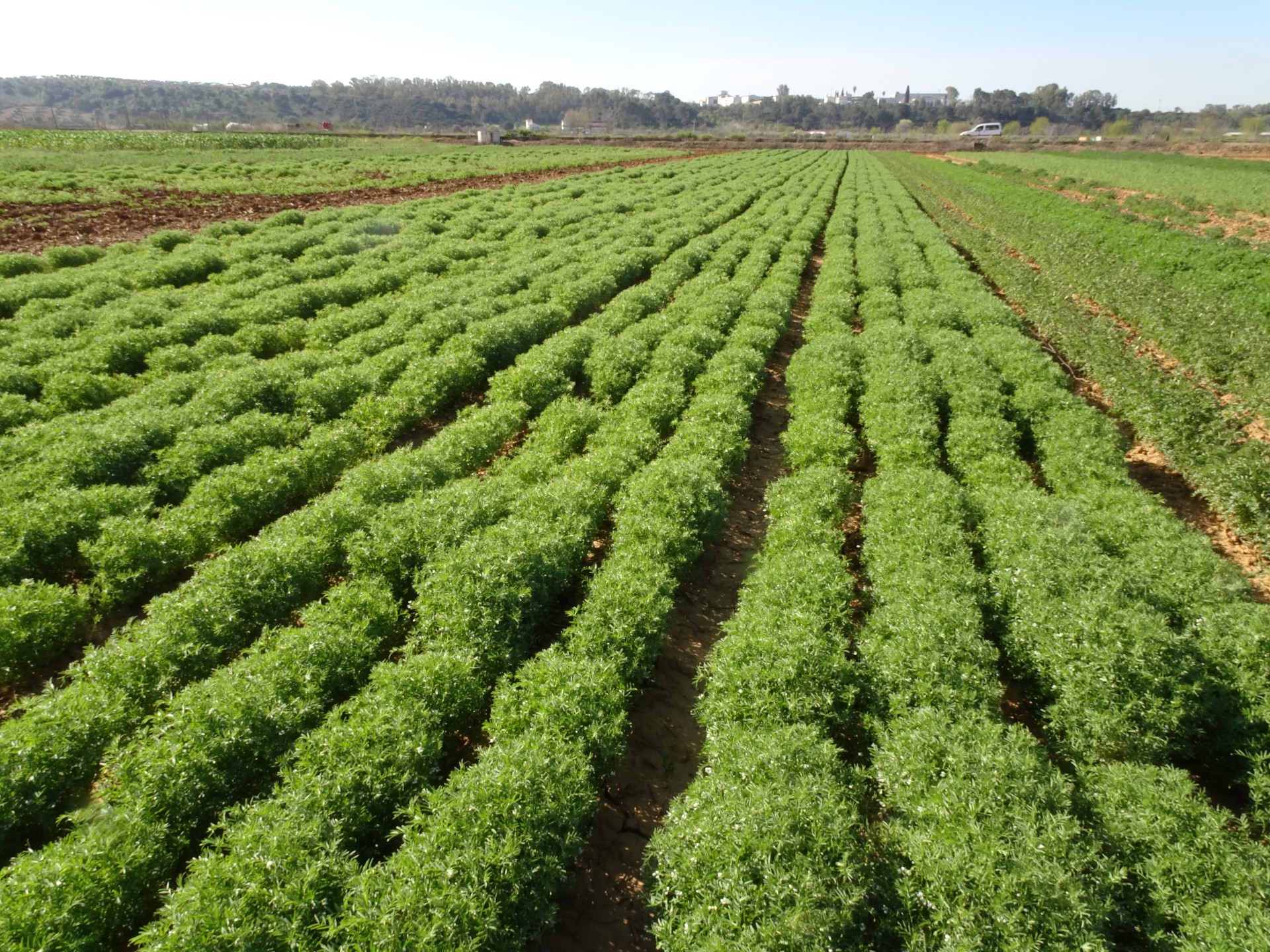Grain legumes
 General information
General information
Legumes are a different plant family from the rest due to their capacity to fixate atmospheric nitrogen, which reduces their nitrogenised fertilisation requirements. Additionally, their introduction in rotational farming improves soil structure and increases biodiversity, reducing the potential issues that may be caused by the plagues and diseases associated to monoculture. They are also interesting because they use less water per kilo of food produced in comparison to other crops. All of the above contributes to reducing the greenhouse gas emissions of farms and to improving their environmental sustainability.
 Most frequently-grown species
Most frequently-grown species
The most popular and most frequently-grown species of grain legumes are chickpeas, lentils, dried beans, dried green beans, dried broad beans, lupines, vetches and ervils. The soya bean also belongs to this group, although these beans are usually considered as oleaginous due to their high oil content.
Grain legumes are traditionally grown in dry land. Their edible seeds stand out for their nutritional qualities. They have a high protein gluten-free content, which is rich in essential amino acids. Additionally, they have significant amounts of micronutrients, dietary fibre and minerals. In general, their fat content is low with no cholesterol.
 Growing area
Growing area
In spite of the legumes being so important in Spain, the grain legume area in the country and specifically in Extremadura is reduced with a decreasing trend, mainly due to the grain legume low market price. This situation affects the farming industry in general. According to the information of the Ministry of Agriculture (2019), the national area of grain legumes slightly exceeds 400,000 ha. In Extremadura the area is approximately 9,000 ha. The main crop in terms of area is the green bean (5,300 ha), followed by the chickpea (2,151 ha) and the lupine (826 ha).
 Varieties obtained at CICYTEX
Varieties obtained at CICYTEX
CICYTEX has several lines of research focusing on the improvement of the issues affecting these types of crops.
Within the agronomic techniques being used, genetic improvement has contributed the most to improve the performance of these crops in the latest decades. CICYTEX has worked over several decades to obtain several varieties of the various legumes such as the chickpea (Badil, Bonal, Castúo, Tizón), the lentil (Azagala, Candela) or the lupine (Alburquerque, Marta, Zapatón or, recently, Orden Dorado).
The latest lupine variety obtained at CICYTEX, known as Orden Dorado, was registered at the Spanish Office of Plant Varieties in 2019. This is a sweet variety with low anti-nutritional content. It is suitable for human consumption and it has also been tested as feed for Iberian pigs.
 Tests for the assessment of commercial varieties
Tests for the assessment of commercial varieties
Given the agronomic advantages of these crops, tests have been performed in the 2020-2021 Campaign for the assessment of varieties in two regions that represent the Extremadura dryland farming area, i.e. Campiña Sur and Olivenza. Initially, several varieties of chickpeas, lentils and lupines have been under study, and some of them are obtained at CICYTEX. These are comparable to other commercial varieties from an agronomic point of view.
 Recovery of local varieties with high nutritional value
Recovery of local varieties with high nutritional value
Due to their excellent properties as food products, the composition of other local varieties of legumes that were abandoned in the region due to their low performance has also been assessed. The aim was to select the most interesting ones from a nutritional and differential point of view so that a higher price could be established for their production, taking into account the current market and consumer trends.
 Weed control
Weed control
Weed control is very important for the growth of legumes in order to guarantee a successful crop. However, there are only a few active products that can be currently used as weed killers, due to continuous European Union restrictions. The effectiveness of various products on the chickpea, lentil and lupine crops are currently under study.
 Use as animal feed: Circular economy
Use as animal feed: Circular economy
Following the Regional Strategy of a Green and Circular Economy, the use of legumes that are adapted to the region as sustainable sources of protein for the feeding of pigs and inland aquaculture is under study. This strategy is aimed at limiting the soya bean imports from America and promoting grain legume growth, which would mean that the region would retain a greater proportion of the end added value, with the current costs of importing soya feeding into the economy. Specifically, the use of the Orden Dorado sweet lupine (obtained by CICYTEX) has been considered for animal fodder to be provided to the Iberian pig at the pre-fattening stage, in replacement of the soya bean, with good results being obtained, as the lupine can replace the soya bean without affecting production. This study will be completed with the final fattening stage in a project that has only started in 2021.
 Nutritional and industrial quality
Nutritional and industrial quality
A large portion of the testing performed on these crops aims at nutritional characterisation, especially in studies leading to the improvement of the added value of productions, both in grains for human food, and grains for animal consumption.







